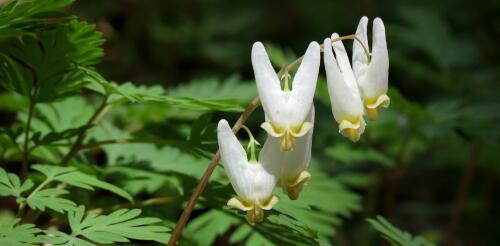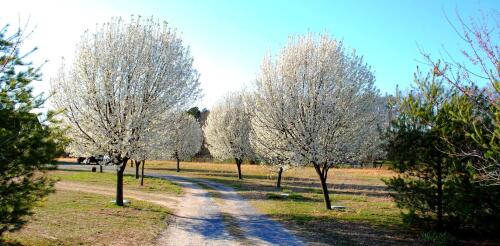Trees
Curious Kids is a series for children of all ages. If you have a question you’d like an expert to answer, send it to curiouskidsus@theconversation.com. How do spices get their flavor? – Liam, age 6, San Francisco I love savory and spicy foods. Lasagna laden with basil and oregano. Beautifully golden curries infused with turmeric, or rice flavored with saffron. I can’t pass up a cinnamon-dusted snickerdoodle cookie. And some of my favorite childhood memories center on my mom’s nutmeg-infused sweet potato pie. These ingredients come from many different plants and distinct plant parts, including leaves, seeds, bark and plant oils. Their flavors are created by accumulated phytochemicals – substances the plants make. “Phyto” comes from the Latin word for plant. Plants produce chemicals for different purposes. In my recent book, “Lessons from Plants...
If you’re feeling the misery of allergy season in your sinuses and throat, you’re probably wondering what nature has in store for you this time – and in the future. Pollen allergies affect over 30% of the global population, making them a significant public health and economic issue as people feel ill and miss work. Our research shows that, as greenhouse gases warm the planet, their effects are driving longer and more intense pollen seasons. To help allergy sufferers manage their symptoms in our changing climate, we’re building better pollen forecasts for the future. As atmospheric scientists, we study how the atmosphere and climate affect trees and plants. In a 2022 study, we found that the U.S. will face up to a 200% increase in total pollen this century if the world continues producing carbon dioxide emissions at a high rate. Pollen season in general will start up to 40 days earlier in the spring and last up to 19 days longer than today under that scen...
For short-lived spring wildflowers such as wood anemone (Anemone quinquefolia) and Dutchman’s breeches (Dicentra cucullaria), timing is everything. These fleeting plants, known as ephemerals, grow in temperate forests around the world, leafing out and flowering early in spring before the trees towering above them leaf out. Emerge too early, and it will still be winter; emerge too late, and it will be too shady under the forest canopy for essential photosynthesis to happen. Over their evolutionary history, these plants have figured out the best timing for their survival. But climate change is altering spring growing conditions, and plant life is changing along with it. There are many examples of plants shifting flowering time in response to warming temperatures, such as cherry blossoms opening earlier and earlier each year. However, when one part of an ecosystem shifts, will all the organisms that depend on it successfully shift too? Or will they be out of luck? And what...
When people think of spring, they often picture flowers and trees blooming. And if you live in the U.S. Northeast, Midwest or South, you have probably seen a medium-sized tree with long branches, covered with small white blooms – the Callery pear (Pyrus calleryana). For decades, Callery pear – which comes in many varieties, including “Bradford” pear, “Aristocrat” and “Cleveland Select” – was among the most popular trees in the U.S. for ornamental plantings. Today, however, it’s widely recognized as an invasive species. Land managers and plant ecologists like me are working to eradicate it to preserve biodiversity in natural habitats. As of 2023, it is illegal to sell, plant or grow Callery pear in Ohio and Pennsylvania, and will become illegal in South Carolina on October 1, 2024. North Carolina and Missouri will give residents free native trees if they cut down Callery pear trees on their property. How did this tre...
Wildfires and severe drought are killing trees at an alarming rate across the West, and forests are struggling to recover as the planet warms. However, new research shows there are ways to improve forests’ chances of recovery – by altering how wildfires burn. In a new study, we teamed up with over 50 other fire ecologists to examine how forests have recovered – or haven’t – in over 10,000 locations after 334 wildfires. Together, these sites offer an unprecedented look at how forests respond to wildfires and global warming. Our results are sobering. We found that conifer tree seedlings, such as Douglas-fir and ponderosa pine, are increasingly stressed by high temperatures and dry conditions in sites recovering from wildfires. In some sites, our team didn’t find any seedlings at all. That’s worrying, because whether forests recover after a wildfire depends in large part on whether new seedlings can establish themselves and grow. However,...



